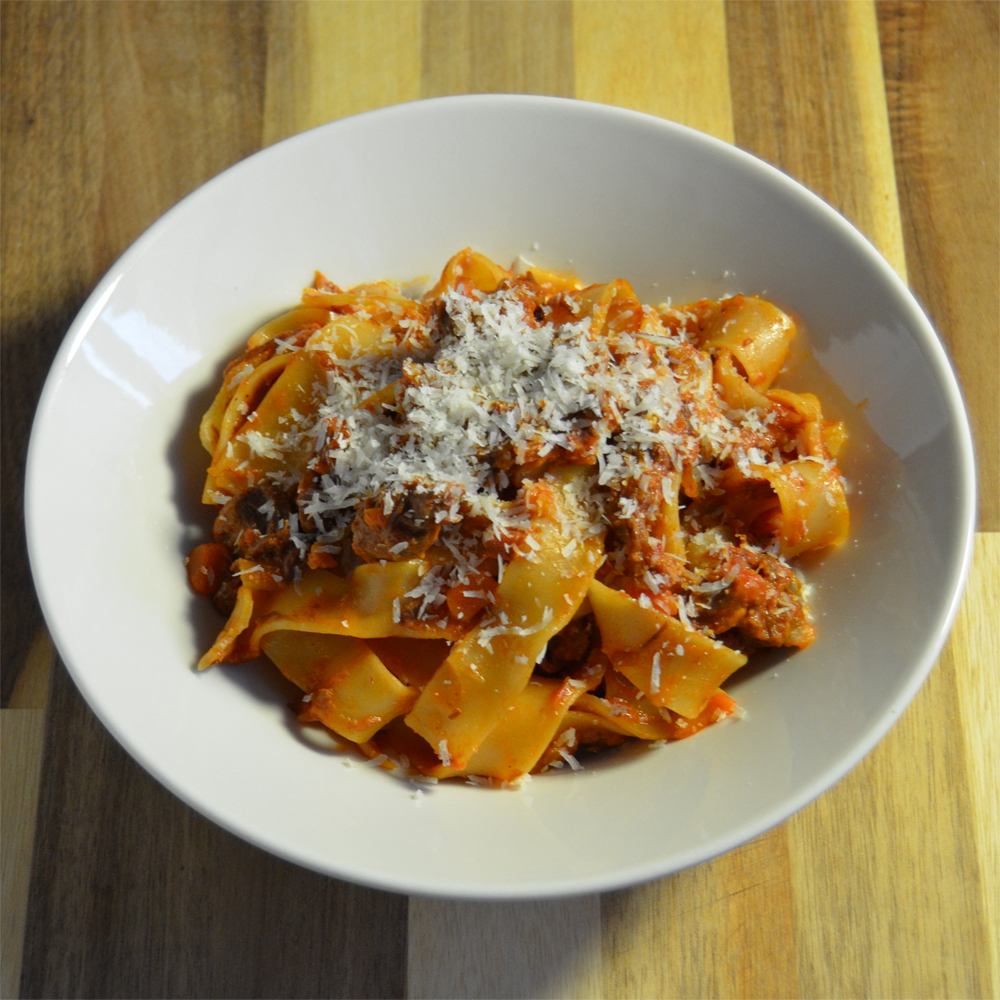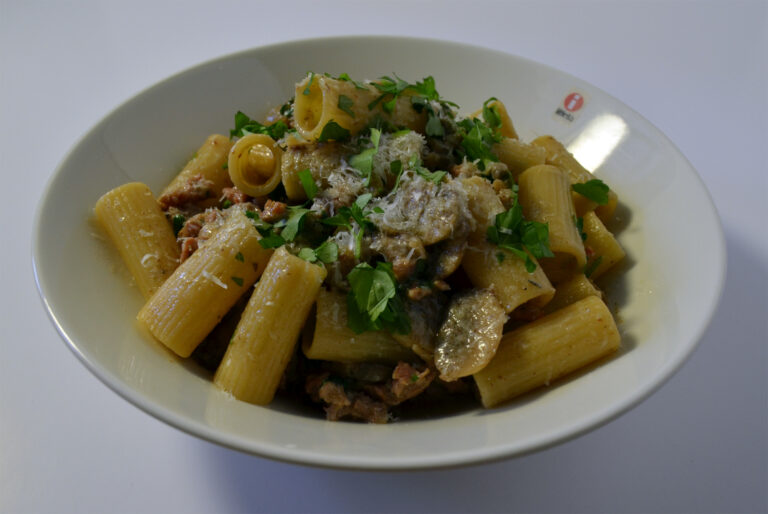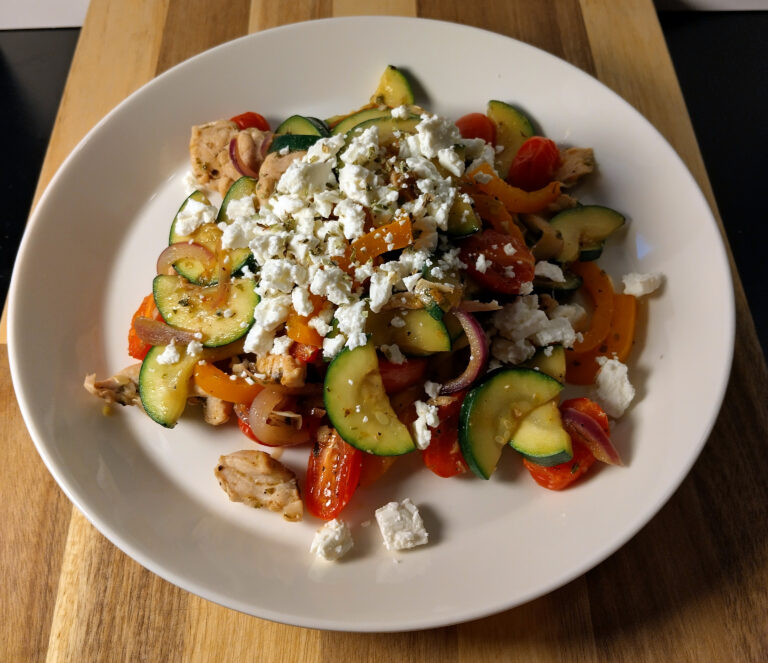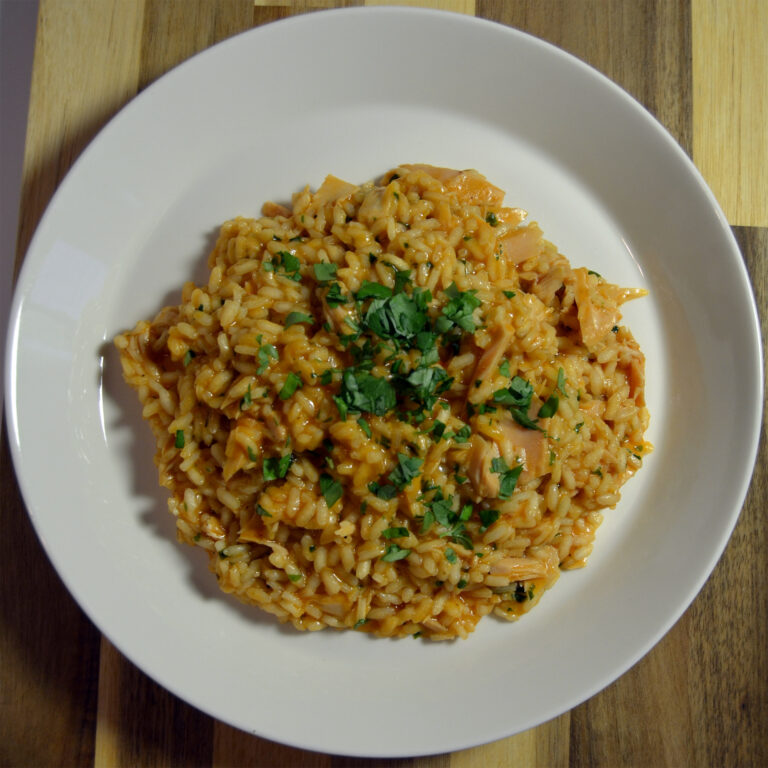Authentic Ragù alla Bolognese
This is a proper Bolognese. No garlic, no herbs, and definitely not “done in 30 minutes.” It’s slow-cooked and built on good meat, soffritto, wine, milk, and time. The result is rich, balanced, and comforting without being overly tomato-heavy like many quick versions. There may be slight differences to the official recipe published by the Italian Academy of Cuisine, but I’d still call this an authentic ragù alla Bolognese. That official version allows for some flexibility, and this one leans more toward a rustic home-cooked dish than a restaurant-style plate.
The Meat
I used beef chuck, cut into small cubes instead of ground meat. It gives the sauce more texture and deeper flavor, especially after a few hours of slow cooking. You want a cut with some fat and connective tissue so it stays moist and breaks down into tender, flavorful pieces. If you prefer a smoother texture, you can use ground beef instead, but I like the chunkier, more rustic result you get from whole cuts.
You can go with all beef or mix in ground pork or pancetta. I used pancetta here for added richness and depth.
The Soffritto
The soffritto — onion, celery, and carrot — is the flavor base of a proper Bolognese. There’s a bit of chopping before you get to cooking, but I actually enjoy it, especially with a glass of wine and some music on. You don’t need to dice everything super fine, but try to keep the pieces roughly the same size.
Milk & Wine
You can leave the milk out, but it is traditionally used in Bolognese. It helps mellow the acidity and ties the flavors together.
You can use either red or white wine. Both work well and bring slightly different character to the dish. I usually lean toward red for depth, but this time I used white for a brighter flavor — and it turned out great.
Make Extra
Bolognese takes time, but the payoff is worth it — and it stores well. I usually make more than I need and freeze the extra in portions. It keeps for up to 3 months and reheats great on the stovetop with a splash of water or stock to loosen it up. It also lasts several days in the fridge and honestly tastes even better the next day.
Authentic Ragù alla Bolognese
Course: Lunch, DinnerCuisine: ItalianDifficulty: Medium8
servings30
minutes4
hoursIngredients
800g beef chuck, cubed
300g pancetta, diced
120g onion, diced
120g carrot, diced
120g celery, diced
250 ml red or white wine
400g canned whole tomatoes
2 tbsp tomato paste
250 ml whole milk
3 tbsp extra virgin olive oil
Light meat or vegetable stock (or water), as needed
Salt & pepper, to taste
(Optional) A pinch of nutmeg
- For serving
Pasta (pappardelle, tagliatelle or rigatoni preferred)
(Optional) Parmigiano Reggiano, grated
Directions
- Heat a large pot (a Dutch oven is ideal) over medium-high heat.
- Add 1 tablespoon of olive oil and brown the meat in batches, then set aside.
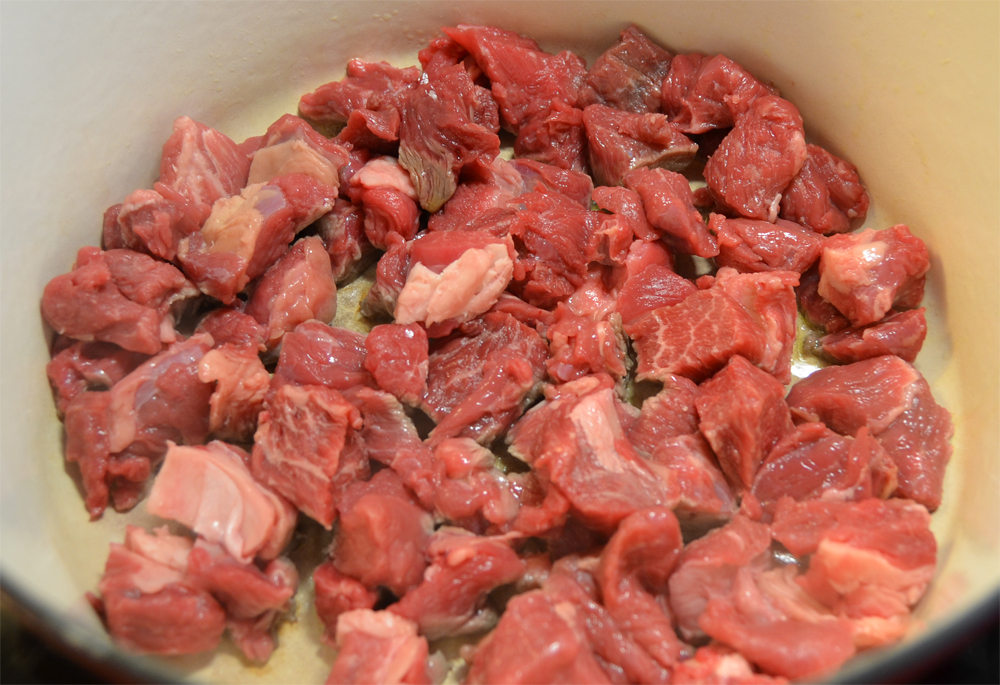
- Add the pancetta to the pot and cook until most of the fat renders and it’s starting to get some color.
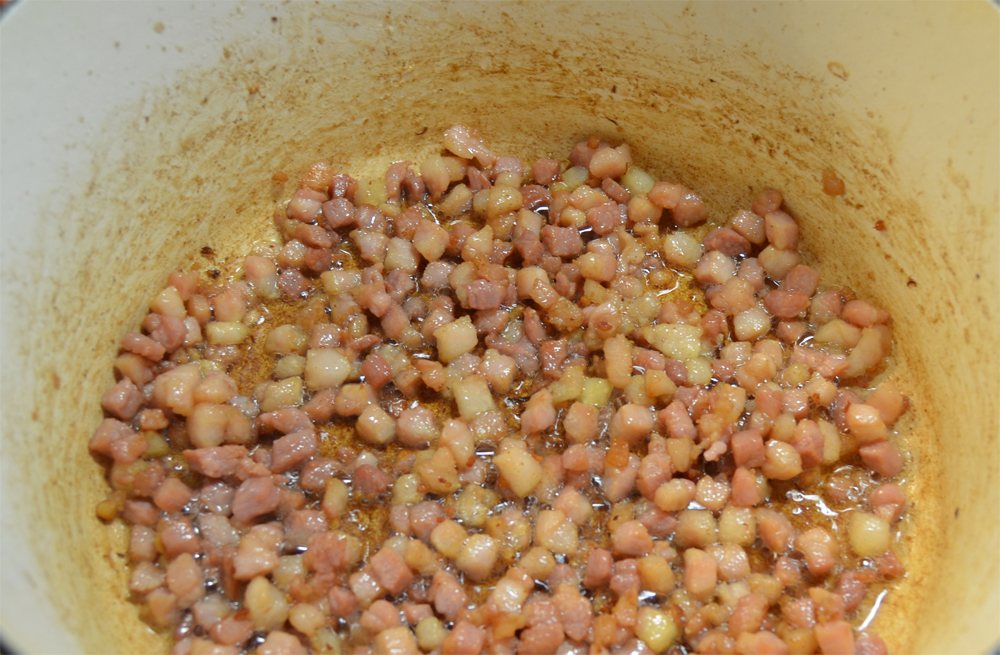
- Add the rest of the olive oil and all the vegetables (onion, carrot & celery) to the pot. Cook over medium heat until softened — not browned.
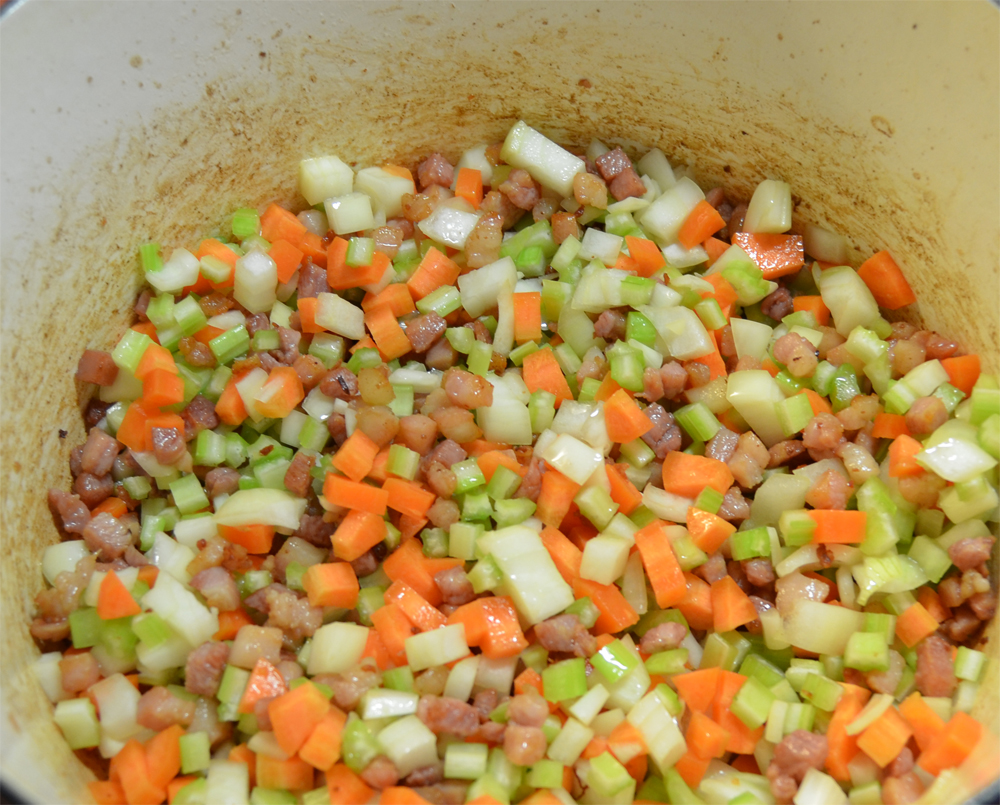
- Deglaze with the wine and let it reduce until mostly evaporated.
- Stir in the tomato paste and canned tomatoes, breaking them up with a spoon.
- Return the beef to the pot and add at least 250 ml of stock or water.
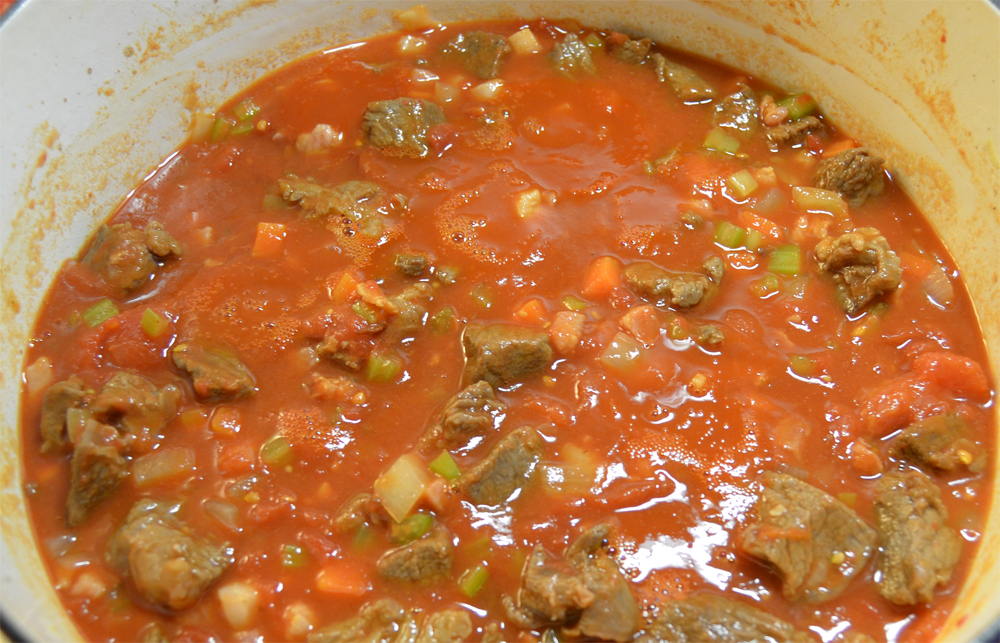
- Simmer uncovered or partially covered with a lid for 2-4 hours, stirring occasionally and adding liquid as needed. Add the milk about halfway through.
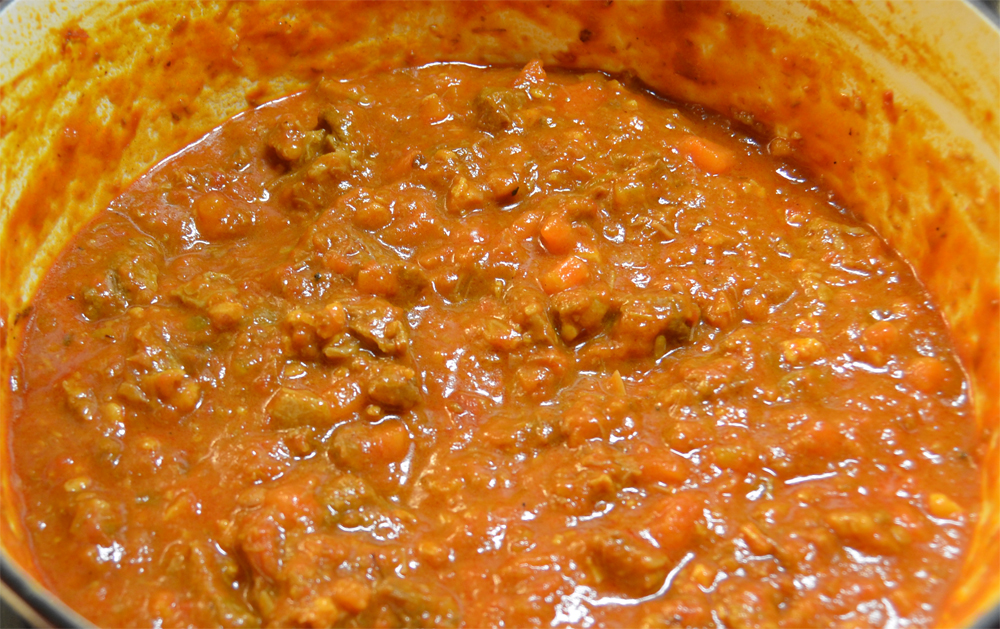
- Once the meat is tender and shreds easily, it’s ready. Season to taste with salt & pepper, and optionally, nutmeg.
- Serving with Pasta
- Bring a large pot of generously salted water to a boil.
- Add the pasta and cook until al dente. Reserve some of the pasta water.
- In a pan or bowl, mix about 100–150g of sauce per 100g of dry pasta. Add pasta water as needed to loosen.
- Serve topped with grated Parmigiano Reggiano.

